In the current technological era, Multi-Factor Authentication (MFA) is not just a recommendation; it’s an essential shield against the ever-growing threats of cyber intrusions. As we navigate through a sea of endless data breaches and sophisticated hacking incidents, relying solely on a password for protection feels akin to securing a vault with a piece of string. Multi-Factor Authentication stands out as a critical layer of security that does more than just fortify your defenses—it transforms them. This blog post dives into the mechanics of MFA, why it’s indispensable for safeguarding your digital assets, and how implementing it correctly can be a game-changer for both personal security and business integrity. Prepare to see why MFA is the hero the digital world didn’t know it needed.
How Does Multi-Factor Authentication Work? Unpacking the Security Powerhouse
Multi-Factor Authentication operates on a simple yet potent premise: one form of verification is not enough. Hackers might crack a password, but breaching multiple layers of authentication is a whole different ball game. Let’s dissect how MFA turns the usual security protocol on its head and why it’s a nightmare for potential intruders.
Elevating Security Beyond the Basic Password:
MFA requires users to provide two or more verification factors to access their accounts, drastically minimizing the risk of unauthorized access. These authentication factors typically fall into three categories:
1. Something you know – like a password or PIN.
2. Something you have – such as a smartphone or a hardware token.
3. Something you are – this involves biometrics like fingerprints or facial recognition.
When you log into a service that uses Multi-Factor Authentication, the process goes beyond the standard username and password. First, you’ll enter your password—that’s step one. But hold tight, because that’s just the beginning. You’ll then be prompted to enter a second form of identification—maybe a code sent to your smartphone or a fingerprint scan. This double-whammy approach ensures that even if someone nefarious gets their hands on your password, there’s a solid barrier keeping them out of your accounts.
A Real-World Scenario:
Imagine trying to access an account with MFA enabled. You key in your password (the first factor), and immediately, you receive a notification on your smartphone (the second factor) with a temporary authentication code. You punch in this code, and voilà—you’re in. The beauty of this setup? If someone were trying to hack into your account from another location, they’d hit a wall at the second factor unless they somehow managed to also steal your physical device.
Why It’s an Ironclad Strategy:
The power of Multi-Factor Authentication lies in its flexibility and adaptability. Hackers might predict a password, intercept a text, or even duplicate a fingerprint, but the likelihood of compromising two or more diverse authentication factors is exceedingly slim. This not only adds an extra layer of security but also provides a safety net in case one factor is breached.
In essence, Multi-Factor Authentication is a dynamic security sentinel. It’s like having a bouncer check not just the ID but also a fingerprint and a secret handshake before letting anyone into the club. It’s robust, it’s reliable, and frankly, it’s revolutionizing the way we protect our digital lives. With MFA, your digital security isn’t just enhanced; it’s multiplied.
Key Benefits of Multi-Factor Authentication: The Security Game-Changer
When it comes to defending your digital realm, Multi-Factor Authentication (MFA) isn’t just an upgrade; it’s a fundamental shift in the battle against cyber threats. Let’s explore the powerhouse advantages that make MFA a non-negotiable pillar of modern security.
Drastically Reduced Risk of Security Breaches:
The most immediate and impactful benefit of Multi-Factor Authentication is its ability to drastically cut down the incidence of unauthorized access. Unlike traditional security methods, where a single piece of information grants access, MFA requires multiple proofs of identity, making unauthorized access exponentially harder. It’s like having a lock that requires three different keys to open — losing one won’t compromise the whole lock.
Boost in User Trust and Confidence:
In an era where news of data breaches regularly makes headlines, trust is as valuable as the data itself. Implementing MFA demonstrates a commitment to security that can significantly enhance users’ trust. For businesses, this trust translates into customer loyalty and brand strength. Users feel more secure when they know their accounts are shielded by Multi-Factor Authentication, and a comfortable user is a happy user.
Compliance with Regulatory Standards:
With the increase in regulatory demands for data protection, such as GDPR in Europe and CCPA in California, failing to adequately protect user information can be a costly affair. Multi-Factor Authentication helps organizations meet these stringent regulations by providing a robust mechanism to safeguard user data. This not only helps in avoiding hefty fines but also assures compliance auditors that your security protocols meet industry standards.
A Deterrent Against Phishing and Social Engineering Attacks:
MFA provides a solid defense against some of the most common and successful cyber attacks: phishing and social engineering. Even if an employee is tricked into revealing their password, the additional authentication factors serve as a fail-safe, preventing intruders from gaining full access. This added layer can mean the difference between a near-miss and a full-blown data disaster.
Enhanced Security with Minimal Disruption:
One of the common pushbacks against enhanced security measures is the potential inconvenience they could cause. However, Multi-Factor Authentication strikes an admirable balance between heightened security and user convenience. Modern MFA methods, such as biometric authentication and mobile app confirmations, are not only secure but also quick and user-friendly. They provide formidable security without slowing down the pace of work, a critical factor in our fast-moving digital world.
In summary, Multi-Factor Authentication isn’t just a tool; it’s an essential strategy that fortifies security, builds trust, ensures compliance, and guards against the most cunning of cyber threats. For anyone serious about digital security, the question isn’t whether to implement MFA, but rather how quickly it can be done. With MFA, you don’t just protect data; you build an environment where security and usability go hand in hand, empowering users and businesses alike to thrive in the digital ecosystem.
Common Multi-Factor Authentication Methods: Choosing Your Digital Armor
Multi-Factor Authentication (MFA) isn’t just a one-size-fits-all solution. Instead, it offers a versatile arsenal of methods, each boasting its unique strengths and adapting to different security needs. Here, we break down the most common MFA methods, helping you pick the best digital guards for your fortress.
SMS-Based Authentication:
Starting with the basics, SMS-based authentication sends a unique code to the user’s mobile device upon attempting a login. This method requires the user to have the device handy and adds a layer of security by ensuring something you have (the phone) is involved in the access process. However, it’s worth noting that while convenient, SMS-based authentication can be vulnerable to SIM swap attacks or intercepts. Great for everyday use but maybe think twice for high-security needs.
Authentication Apps:
Moving up a notch in security, authentication apps like Google Authenticator or Authy generate time-based codes that sync directly with the login process. Since these codes refresh every 30 seconds and do not rely on SMS, they’re immune to some of the vulnerabilities affecting text-based methods. They strike a balance between robust security and user-friendliness without the need for cellular reception – a solid choice for those looking for an upgrade from SMS.
Biometric Verification:
The pinnacle of personal security, biometric verification uses unique physical characteristics such as fingerprints, facial recognition, or even iris scans to verify identity. This method capitalizes on something you are, providing a high level of security that is incredibly difficult to replicate or steal. Biometrics are becoming increasingly common in everyday devices like smartphones and laptops, integrating seamlessly into our daily routines with minimal hassle.
Hardware Tokens:
For those needing an ironclad level of security, hardware tokens, such as YubiKey, provide physical devices that must be present during the login process. These tokens generate new codes at the push of a button and are immune to remote hacking attempts since they require physical possession to be used. Ideal for high-stakes environments where security cannot be compromised, hardware tokens are the heavy artillery of MFA.
Email-Based Verification:
A step away from SMS, email-based verification sends a secure link or code to the user’s registered email address. While generally more secure than SMS due to the complexities of hacking an email account, this method still faces risks from phishing attempts and email account breaches. It’s more suitable for environments where convenience is still a priority but with a nod towards heightened security.
Selecting the right Multi-Factor Authentication method hinges on balancing your specific security needs with the practical aspects of deployment and user experience. Whether you lean towards the simple effectiveness of SMS, the advanced technology of biometrics, or the unyielding solidity of hardware tokens, the key is to integrate MFA in a way that enhances security without deterring accessibility. The landscape of cyber threats evolves, but with these tools in your arsenal, you’re well-equipped to defend your digital domains.
Challenges and Considerations in Implementing Multi-Factor Authentication: Navigating the Common Pitfalls
While Multi-Factor Authentication (MFA) offers a robust shield against cyber threats, implementing it isn’t without its hurdles. Understanding these challenges and strategizing effectively can make the difference between a seamless integration and a logistical nightmare. Let’s unveil some common roadblocks and how to bulldoze through them.
Technological Compatibility and Integration:
Introducing MFA means meshing new layers of security with your existing systems, which can be as tricky as fitting a square peg in a round hole. Compatibility issues can arise, especially with older systems that weren’t designed with MFA in mind. To navigate this, thorough system audits and possibly upgrades are necessary, ensuring that every cog in your tech machine can handle this new layer of security armor without grinding to a halt.
User Resistance and Education:
Let’s face it, not everyone likes change, especially when it adds extra steps to their daily logins. User pushback is a real challenge, often sprouting from a lack of understanding about the benefits of MFA. To counter this, robust education campaigns and transparent communication are essential. Show users the why and how of MFA, turning the perceived inconvenience into a welcomed addition for personal and collective security.
Budget Constraints:
Budgets aren’t infinite, and adding MFA can bring forth financial considerations, especially for small businesses or organizations already stretched thin. However, viewing MFA as an investment rather than a cost can shift perspectives. Calculate the potential loss from data breaches versus the investment in MFA. Often, the cost of upgrading security is far less than the potential losses from cyber attacks. For budgeting, phase the implementation, starting with the most sensitive data.
Performance and Speed Issues:
Adding security layers can sometimes mean sacrificing speed, which can frustrate users accustomed to instant access. The key here is choosing MFA methods that strike a balance between security and efficiency. For instance, biometric solutions offer a quick yet secure authentication method. Regularly review and tweak settings to maintain an optimal balance that keeps both your data and your users moving swiftly.
Regulatory and Privacy Concerns:
With great power comes great responsibility, and handling more user data with MFA methods introduces privacy and regulatory compliance considerations. Ensure that your MFA solutions comply with data protection laws like GDPR, particularly when deploying biometrics or other personal data-centric methods. Partnering with a knowledgeable legal team to navigate these waters is more than just helpful—it’s essential.
Implementing Multi-Factor Authentication is like setting up dominos; each piece needs to be meticulously placed for the flawless fall. Anticipate these challenges, prepare strategies to address them, and you’ll not only enhance your security but will do so with the backing of your team and resources. Remember, the goal is secure access, not locked-out frustration. By understanding and tackling these considerations head-on, you enable your organization to harness the full potential of MFA without the headaches.
Conclusion: Multi-Factor Authentication – The Uncompromising Guardian of Your Digital Frontier
As we’ve navigated the twists and turns of Multi-Factor Authentication (MFA), one thing is crystal clear: in the modern digital battleground, MFA is not just an option; it’s your best line of defense. Let’s recap why embracing MFA is akin to choosing an impenetrable armor in your cybersecurity arsenal.
Elevating Security to Unprecedented Heights: MFA adds layers of security that make unauthorized access just shy of impossible. Whether it’s through a combination of passwords, device authentication, or biometrics, MFA ensures that your data remains locked down tight – accessible only to those who truly belong.
Building Trust and Compliance Seamlessly: By implementing MFA, businesses not only secure their own assets but also build a fortress of trust around their customers. Compliance with data protection regulations comes easier when you’re backed by the solid foundation of Multi-Factor Authentication.
Meeting Modern Security Needs Without Compromise: In the face of increasingly sophisticated cyber threats, MFA adapts and responds with dynamic and robust security solutions that don’t compromise speed for security, ensuring a seamless user experience.
The Bottom Line: Ignoring Multi-Factor Authentication in today’s digital age is like leaving your doors unlocked in a risky neighborhood. It’s not just about locking those doors; it’s about adding a deadbolt, a security camera, and a reliable alarm system.
It’s high time to champion MFA, to not just prevent potential digital disasters but to propel your digital security into a realm of near invincibility. For those on the fence about upgrading to MFA, consider this: the initial effort and adaptation are a small price to pay for the peace of mind and protection it offers.
Encourage your IT teams, urge your managers, and educate your staff on the non-negotiable benefits of Multi-Factor Authentication. The era of simple passwords is over; the age of Multi-Factor Authentication has arrived. Embrace it, implement it, and watch as your digital world secures itself with unmatched vigor. Let’s not wait for a breach before we act. Let’s act now, secure rigorously, and navigate the digital future with confidence.



